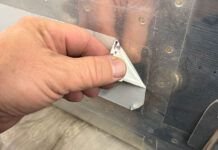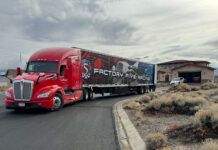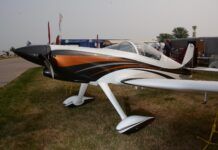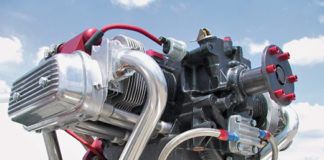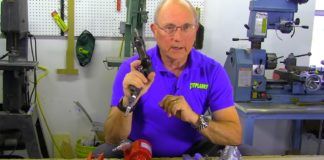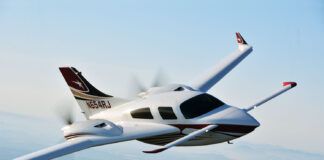The heart of homebuilding has always been innovation. The Wright brothers from Ohio were innovators when they built a motor light enough for their fragile glider-based flying machine to lift, and their unique idea of three-axis control allowed them to not only take it aloft but return safely to the earth. Today’s homebuilders are no less interested in innovation. The idea of trying out new ideas to make their new airplanes more efficient, faster or more maneuverable is almost irresistible when you consider the “plain vanilla” airplanes available from the certified manufacturers. Plans and kits abound, but many like to tweak and change them as they build and, frankly, that is why many of us are involved in this unusual pursuit: We want to do our own thing.
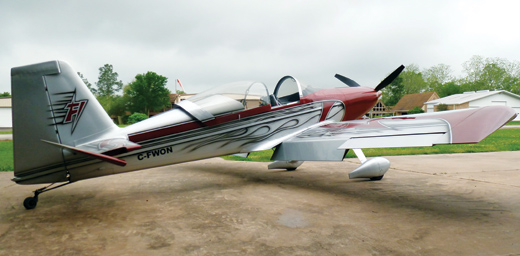
The F-1 Rocket has proved that the coiled fuel tank vent design works well with a very similar fuel-system design.
But (you just knew there was a but, didn’t you?) we need to make sure that when we modify an existing design, we do so with a bit of caution and a measure of respect for that design we are changing. We should acknowledge that while the perfect airplane has not yet been invented, the plans or kit that we are building from probably has been flown successfully at least once (certainly the assumption for a kit; if you’re building from drawings, you might be building the prototype!). Therefore, the basic design should work. If we decide that we can do better, it is important to go through a process to determine if a) our new design or idea will be an improvement over what was provided with the kit, and b) there are any negative aspects to the modification we want to attempt.
Modifying the RV-3
As an example, I’ll describe the process I went through on a recent change to the RV-3 “Tsamiyu” that we completed not too long ago. The RV-3 was the first in a line of kits to come out of Van’s Aircraft. The kit was produced about 30 years ago and is, by today’s standards, somewhat primitive. It is better than building from plans, as the bulkheads and ribs are pre-stamped, some skin panels are already curved (but not trimmed), and most of the necessary welded parts are supplied in raw form, ready for finishing. The design is successful and has many successors, with more than 7600 examples of RVs flying around the world. While the design of the wing was updated in the 1990s, the rest of the kit has been left much as it has always been, with few changes to the fuselage or tail. The change I was contemplating was to the fuel-tank vent system.
Of all of the modifications you can make to a kit aircraft, fuel-system modifications get my attention most quickly as a technical counselor. More new airplanes come to grief due to fuel-system problems on their first flight than almost all other mechanical problems added together. In my experience, fuel systems should be as simple as possible to provide the minimum chances for failure; more parts equal greater chance for failure. The fuel system must be able to store, and then deliver, fuel from the tank to the engine reliably and in sufficient quantity, in all expected flight attitudes, or it is not only useless, but potentially dangerous. All of this meant that I wanted to approach any change to the original design with great care and a skeptical eye.
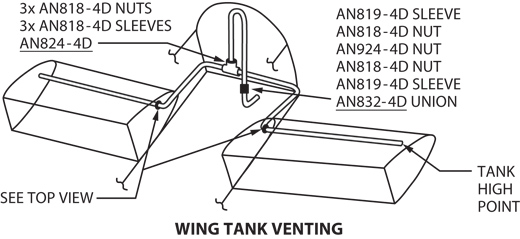
The RV-3 plans show a vent system that ties the two tanks together and includes a tall “trap” against the firewall to prevent fuel from escaping. Of course, a single vent can be plugged and prevent venting of both tanks—all later-model RVs have a separate vent for each tank.
The Original
The “as-designed” fuel system included a tank vent with a small line that ran inside the tank from its open end at the high, outboard end of the tank to the root rib. From there, it runs into the fuselage, up the inside of the forward cockpit to the longeron, and then back down (after making a U-turn) to the bottom of the cockpit and out through the floor. This up-and-down routing provides a “trap” to keep fuel from flowing out of the tank should heat expansion create a siphon effect that could empty the tank. Of course, the purpose of the vent is to allow air back into the tank as fuel is removed, and for this purpose, all it needs is a hole at the high point. But in unusual attitudes or loadings, this could lead to spillage.
All of the two-place RV aircraft share this same basic plumbing scheme, and it has proven to be reliable. Occasionally, if you fill the tanks to the brim with cold fuel and then place them in the sun, fuel will expand enough to burp over the trap and out the vent, just as it is supposed to, without a flowing siphon developing. But building this system means running additional fuel lines into the cockpit, then out the floor, adding a few connections between the wingroot rib and the fuselage (a tight place to work), and more construction in general. It turns out that the builders of the Harmon and F-1 Rockets (aircraft based on the RV to various degrees) eliminated the loop of vent line in the cockpit by simply running the tank vent out of the root end, through a couple of coils of aluminum fuel line, and then out the bottom of the wing/fuselage fairing. It is fairly simple to build, eliminates the cockpit penetration and installation, and the coils act to trap the fuel so that it doesn’t create a siphon. The more coils, the less chance of the siphon effect. Simple and elegant.
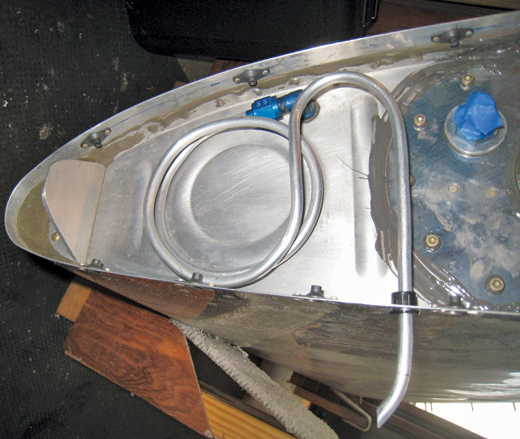
The “coiled vent” design used by the author is simple and keeps the entire vent in the wingroot. It has been used on the Rocket designs quite successfully and is easy to fabricate and install.
Deliberations
So we can see the benefits: less plumbing and easier installation. What’s the downside? Well, two things that can go wrong with a vent are that it dumps fuel overboard when we don’t want it to, or it fails to vent the tank, and the tank collapses before or after the engine quits due to lack of fuel. Identifying these two failures is the first step of our analysis. Looking at the second issue first, is there any chance that the new design is more likely to prevent the tank from venting properly? As long as the line isn’t crimped, fuel and/or air should be just as free to move through in either design. There is probably no difference in the likelihood of a blockage due to debris, as the part that sticks out of the belly of the airplane will be essentially identical in either case. There’s little fear of a lack of venting.
Is this mod more or less likely to create a siphon to burp the fuel out? Well, the high point in the system is not going to be as high with the coil design, so it can be argued that this would be more likely to burp fuel. Is it more likely to create a continuous flow of fuel that would empty the tank? Well, because the outboard end of the vent line is inside the high point of the tank, and this is true for either design, there is no real way that it can pull more than the tip-top amount of fuel out of the tank anyway. Once a small amount of fuel is removed, the fuel is no longer up to the level of the open end of the vent line, so no additional fuel can flow into it, which is the same for either case. The amount of fuel in the vent line itself is the only fuel at risk, and this will be limited by a finite amount of fuel line. Therefore, I would expect that even though it might burp a little more fuel out through the coil system, it is still not going to be excessive.
The Voices of Experience
With these two “failure cases” answered, I then move on to the next phase of my analysis: looking for previous experience. Has anyone done this before, and what were the results? In this case, several hundred Rockets are flying around with exactly this system. Are they good representations of the system that I plan to use in the RV-3? Yes. The tank designs are almost (if not completely) identical, as the Harmon Rocket is built out of RV-4 parts. It is important to make sure that if you are using other aircraft as examples to validate your designs, you make sure they accurately represent what it is you are going to try. In this case, we have lots of flying examples that match the proposed change. Both in principle and in practice, it works. (Flight experience, by the way, is best measured in thousands of hours. It can take that long for problems to show up at the edges of flight envelopes. Having one or two flying examples still puts things in the “initial flight test” phase.)
The last step, and it’s an important one if we don’t want to do unnecessary experimentation, is to ask others about their experience with the idea. I asked Rocket builders how well the fuel vent worked, and their response was, “It works just fine.” Several of the Rocket builders/fliers I asked also had experience with RVs, and I asked them if they had noticed a difference between the two vent designs. The answer was that the Rocket will burp a little more fuel, but it is a teeny amount, and it stops right away. It was just as I had suspected. There was no real problem there.
Now there’s one final step, asking yourself, “If this idea is so great, why didn’t the original designer do it that way?” Oftentimes, this is simply a case of “If it ain’t broke, don’t fix it.” In truth, there is nothing wrong with the existing design for the RV-3. It works fine, and hundreds of people have built it. But there is also no reason not to implement a better idea, if you can be certain (or reasonably certain) that it is a better idea. The process I have described is one way to ascertain that it is, at least, not a worse idea.
As part of my final, final analysis, I like to bounce my idea off of a few other builders, especially if they are engineers who understand trade studies and failure analysis. But even non-engineers might be able to point out flaws in the thought process. In the case of RVs, I have a number of experienced builders and engineers that I fly my ideas past as a reality check. This time, when presented with my thought process, none could see a safety issue. And one of the nice things about this modification is that it is reasonably easy to change back to the original design should I find a problem. I’d just install the in-cockpit vent lines per the drawings (the removable boot cowl skin on this design is what would make this doable).
Making modifications to existing kit designs is certainly not extraordinary, and it is one reason many of us like to build. But careful consideration of both the potential gains and the potential risks must be made before going beyond what the plans show. It is rare when the designer of a particular kit or airplane designs something that won’t work (if it doesn’t work, what does that say about your choice of kit?). By the same token, it is rare when a design is perfect and can’t stand a little improvement at some point. Just be careful and cautious, use a little engineering process, and let the evidence lead you to a good decision. And don’t be afraid to ask for help. There are plenty of builders out there who will be happy to offer.






